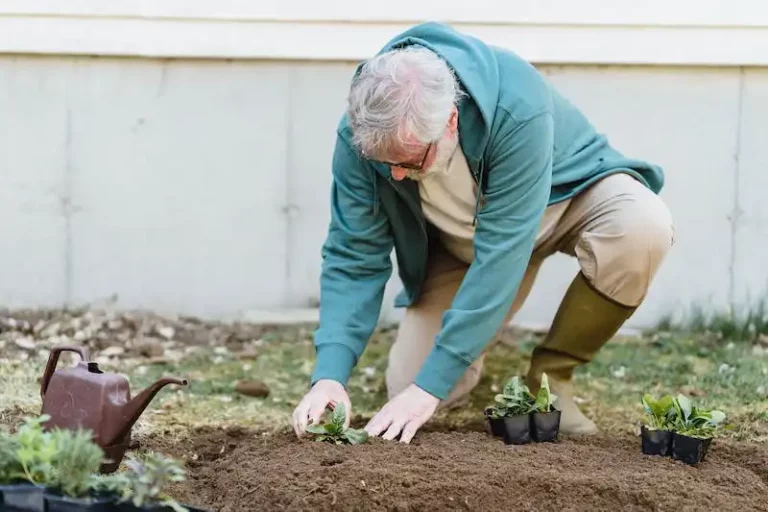Planting bulbs in grass can be a beautiful way to add pops of color to your landscape. Whether you want to plant daffodils, tulips, crocuses, or bluebells, the process is relatively simple. The key is to find the right spot in your lawn where the bulbs will thrive and to ensure proper drainage.
First, choose an area in your lawn where you would like the flowers to appear. This could be in the front yard, along a pathway, or between established perennials. Next, prepare the ground by removing any weeds or diseased grass and ensuring that the soil is in good condition. If necessary, add compost or leaf mulch to improve drainage.
Once the ground is ready, it’s time to plant the bulbs. Dig a hole about 20cm deep and place the bulb with its pointed end facing upwards. You can either plant individual bulbs or use a tag-team planter to plant multiple bulbs at once. If you’re planting different types of bulbs, be sure to space them out accordingly.
After the bulbs are planted, cover them with soil and water them thoroughly. Then, consider interplanting groundcovers or other low-growing plants between the bulbs. This will help beautify your lawn while the bulbs are still growing.
Keep in mind that some bulbs, like crocuses and irises, prefer to be planted in the fall for early spring flowering. Others, like daffodils and tulips, can be planted in the fall or early spring. Check with your supplier or look for specific planting recommendations for each bulb variety.
Once the bulbs are in the ground, you can expect them to bloom and add a burst of color to your lawn for many years to come. Just be sure to keep an eye out for any signs of disease or pests, and take appropriate action if necessary. Enjoy the beauty of your blooming bulbs!
Want to learn more about planting bulbs in grass? Check out this video for step-by-step instructions and helpful tips.
Links:
- How to Plant Bulbs in Lawns – A comprehensive guide to planting bulbs in lawns.
- Growing Bulbs in Grass – Tips and advice for successful bulb planting in grass.
- Bulbs for Every Season – Discover the best bulbs for each season and how to care for them.
How to plant bulbs in a lawn
Planting bulbs in a lawn can be a beautiful way to add color and interest to your yard. Here are some tips to help you successfully plant bulbs in your grass:
1. Choose the right bulbs: When selecting bulbs, choose ones that are suitable for your climate and the soil conditions in your garden. Most bulbs, such as tulip and daffodil bulbs, prefer well-draining soil.
2. Decide on bulb depths: The depth at which you plant your bulbs will depend on the type of bulb you are planting. As a general rule, larger bulbs like tulips should be planted deeper (around 15cm) than smaller ones like crocus bulbs (around 4-5cm).
3. Prepare the lawn: Before planting, prepare the area of the lawn where you want to plant the bulbs. Remove any existing grass or groundcover, as the bulbs won’t grow well if they have to compete for nutrients and space.
4. Create holes for the bulbs: Use a bulb planter or a small shovel to create holes in the lawn where you will plant the bulbs. Space the holes according to the recommended spacing for the specific type of bulb you are planting.
5. Plant the bulbs: Place the bulbs into the holes with the pointed end facing upwards. Gently cover the bulbs with soil, pressing it down lightly to ensure good contact between the bulb and the soil.
6. Feed and care for the bulbs: After planting, water the bulbs well and add some slow-release bulb fertilizer to help promote healthy growth. You can also add a layer of mulch or organic material on top to help retain moisture and prevent weed growth.
7. Let the grass grow: It’s important to resist the temptation to mow the grass too early. Allow the grass to grow and the leaves of the bulbs to appear before mowing. This will give the bulbs time to replenish their energy reserves for the following year’s flowering.
8. Plan for future planting: To ensure a continuous display of blooms, consider planting bulbs in a different area of the lawn each year. This will prevent the bulbs from overcrowding and competing for nutrients.
These are just a few tips to help you successfully plant bulbs in your lawn. For more detailed instructions, you can watch the accompanying video or check out the links to other helpful resources.
Which bulbs are best for planting in grass
When it comes to planting bulbs in grass, there are a few types that are particularly well-suited for this purpose. Here is a guide to help you choose the best bulbs for planting in grass:
- Tulips: Tulips are a popular choice for planting in grass. They are available in a variety of colors and bloom early in the spring. Tulips prefer well-drained soil and should be planted at a depth of about 15cm.
- Crocuses: Crocuses are another great option for planting in grass. They are small, early-flowering bulbs that can add a splash of color to your lawn. Crocuses prefer well-drained soil and should be planted at a depth of about 8cm.
- Daffodils: Daffodils are a classic choice for planting in grass. They are easy to grow and come in a wide range of colors and sizes. Daffodils prefer well-drained soil and should be planted at a depth of about 10cm.
- Snowdrops: Snowdrops are small, delicate bulbs that bloom in late winter or early spring. They prefer well-drained soil and should be planted at a depth of about 5cm.
- Bluebells: Bluebells are a native bulb that can thrive in grassy areas. They produce beautiful blue flowers and prefer well-drained soil. Bluebells should be planted at a depth of about 10cm.
When choosing bulbs for planting in grass, it’s important to consider their growth habits. Some bulbs, like tulips and crocuses, will naturalize and spread over time. Others, like daffodils, will grow in clumps and might need to be divided every few years.
Additionally, it’s important to consider the timing of flowering. Some bulbs, like snowdrops, will flower very early in the season, while others, like daffodils, will flower later. By choosing a mix of bulbs with different flowering times, you can enjoy a longer period of color in your lawn.
If you’re unsure about which bulbs to choose, it’s always a good idea to consult a planting guide or ask for advice at your local garden center. They can help you choose bulbs that are well-suited to your specific area and growing conditions.
How to Plant Bulbs in Grass
Planting bulbs in grass is a great way to add a burst of color to your lawn in the spring. Whether you’re a seasoned gardener or a beginner, this guide will show you how to successfully plant bulbs in your grass so that they bloom beautifully.
First, choose the type of bulbs you want to plant. Tulips, crocus, and daffodils are popular choices, but you can also experiment with different types of flowering bulbs. Make sure to purchase bulbs from a reputable supplier to ensure quality.
Once you have your bulbs, select the areas in your lawn where you want them to grow. Consider the amount of sunlight and soil condition in each area. Bulbs generally prefer well-draining soil, so make sure the selected spots have good drainage.
Next, prepare the ground. Use a spade or trowel to remove a small section of grass and soil, creating a hole for each bulb. The depth and spacing will depend on the type of bulb, so refer to the supplier’s instructions for specific planting depths and distances.
Place the bulbs in the holes, with the pointed end facing upwards. If you’re planting multiple bulbs, you can either plant them individually or use a tag-team approach by placing several bulbs in a large hole. Cover the bulbs with soil and gently pat it down.
Alternatively, you can use a plastic flowerpot or a special bulb-planting tool to plant bulbs in the grass. Cut a hole in the grass using the pot or tool, place the bulb inside, and fill the hole with soil.
Maintain the area where you’ve planted the bulbs by watering it regularly. It’s important to keep the soil moist but not waterlogged. Too much water can cause the bulbs to rot.
During the first year, the bulbs may not produce as many flowers as they would in subsequent years. This is normal, so don’t be discouraged if the display isn’t as spectacular as you had hoped.
After the bulbs have finished flowering, allow the foliage to die back naturally. This is important, as the leaves provide nutrients to the bulbs for the following year’s growth. You can mow the grass once the foliage has completely withered and turned brown.
If you notice any diseased or heavily damaged foliage, remove it to prevent the spread of diseases. Leaf spots and other common leaf diseases can be treated with appropriate fungicides, but it’s best to consult a gardening expert for guidance.
In the meantime, you can fill the spaces between the bulbs with groundcovers or summer-flowering plants to create a visually appealing landscape. This can also help hide the dying foliage of the bulbs.
With proper care and maintenance, the bulbs will continue to grow and bloom year after year, adding beauty to your lawn. Whether you choose to plant bulbs individually or in groups, the flowering display will be a sight to behold and a joy to behold.
So why wait? Get started on planting bulbs in your grass and enjoy the colorful show throughout the seasons!
5 Prime Spots to Beautify Your Yard With Flower Bulbs
When it comes to planting flower bulbs, there are several prime spots in your yard that you may prefer to beautify. Whether it’s the front yard or other key areas, these spots will enhance the overall look of your garden and add a pop of color that doesn’t have to last for just a few weeks. With proper care, your flower bulbs can bloom year after year, bringing joy to your outdoor space throughout the seasons.
1. Planting Amongst the Grass
One prime spot to consider is planting bulbs directly into your turf. This can be a tricky process, but with the right technique, you can create a stunning display. Crocus bulbs are a popular choice for this, as they tend to be smaller and their foliage dies back early in the season. Just make sure to lift a small section of turf, plant the bulbs, and then replace the turf. This ensures that the bulbs establish themselves and also keeps your grass healthy.
2. Creating a Tag-Team Effect
If you have flower beds or gardens, you can use flower bulbs to complement your established plants and create a tag-team effect. Planting bulbs that bloom earlier in the season, such as crocuses, can fill the space with color before the other flowers start to grow. This way, you’ll have a continuous bloom of flowers from early spring until later in the year.
3. Adding a Pop of Color to Containers
Containers and pots can also be the perfect place to plant your flower bulbs. Whether it’s tulips or other varieties, burying the bulbs in containers above the ground ensures that they will stand out and provide a beautiful display. Just make sure to use healthy soil and provide enough space for the bulbs to grow. You can also add some wire mesh at the base of the container to prevent pests from getting in.
4. Fill in Gaps and Bare Areas
If you have areas in your yard where the ground is left bare or the foliage looks diseased, planting flower bulbs can be a quick and easy way to fill in those gaps. By choosing bulbs that thrive in your region and climate, you can ensure that they will grow and add beauty to areas that might otherwise go unnoticed.
5. Enhancing Existing Flower Beds
Lastly, you can use flower bulbs to enhance existing flower beds in your yard. Whether it’s tulips or other flowering varieties, planting bulbs in and around your established plants can add a new dimension and create a stunning visual impact. Just make sure to follow the proper planting and care instructions for each type of bulb to ensure the best results.
Remember, the key to successful bulb planting is to decide where and how to plant them based on the specific needs of each variety. Whether you choose to plant bulbs in your lawn, flower beds, or containers, keeping them well-fed, pest-free, and in the right soil conditions will help them thrive and bring beauty to your yard year after year.
For more information about planting flower bulbs, check out this video or visit our dormant bulb planting page on our website.




